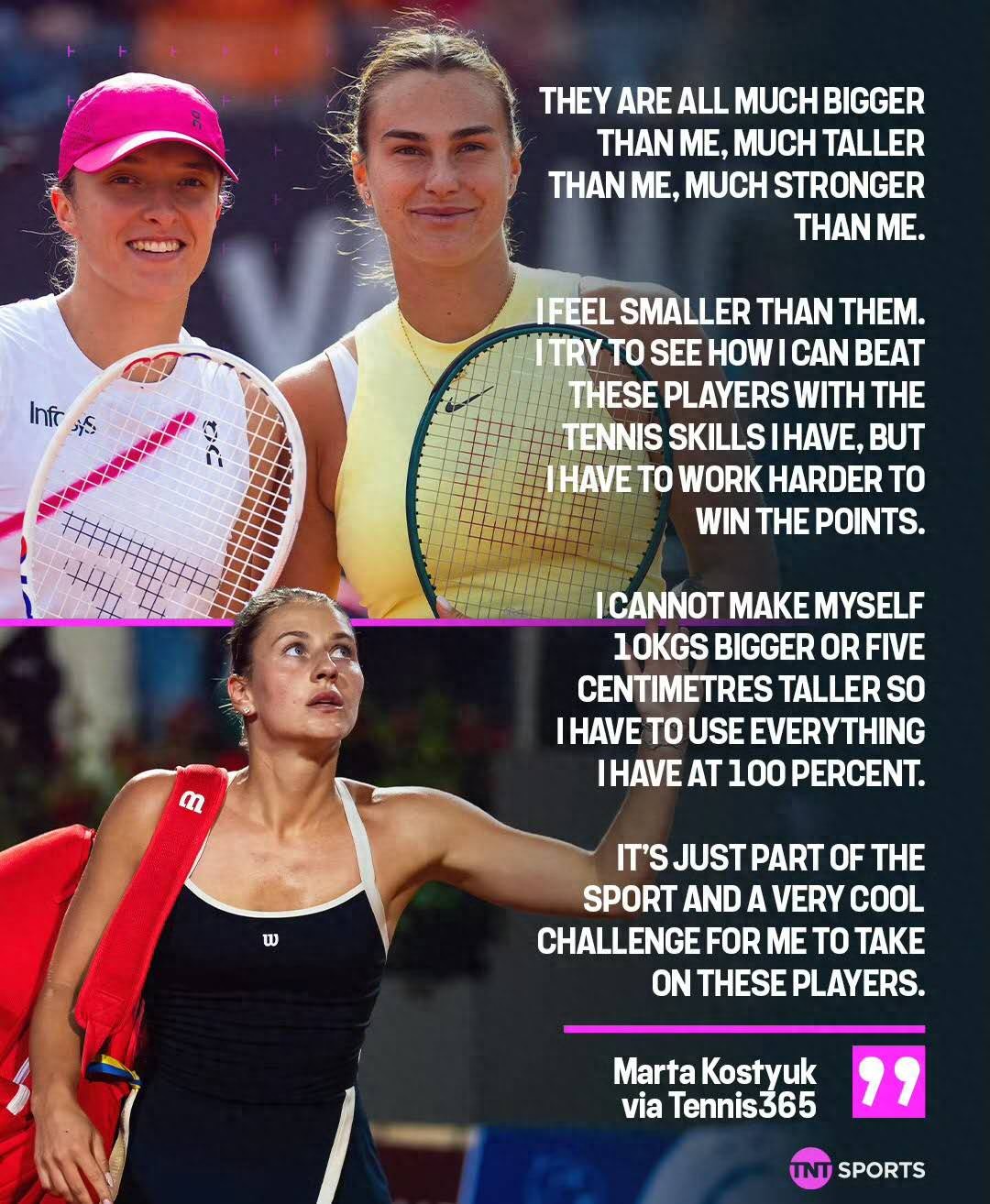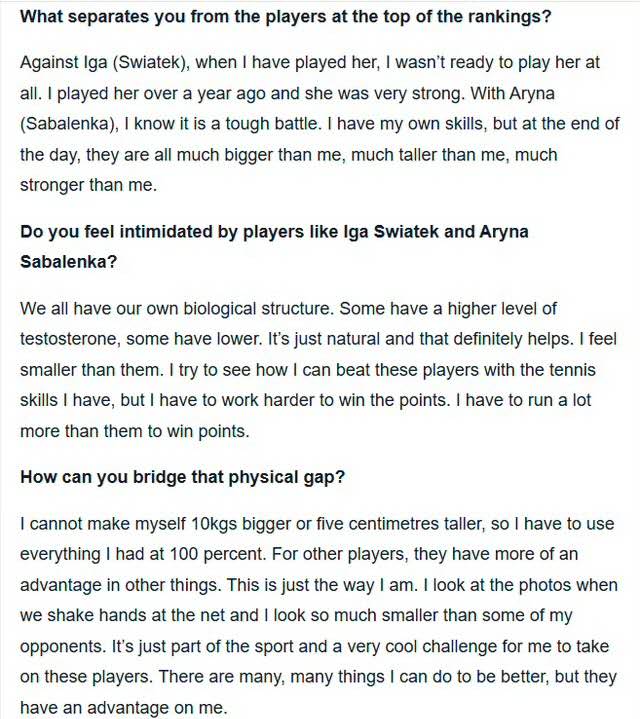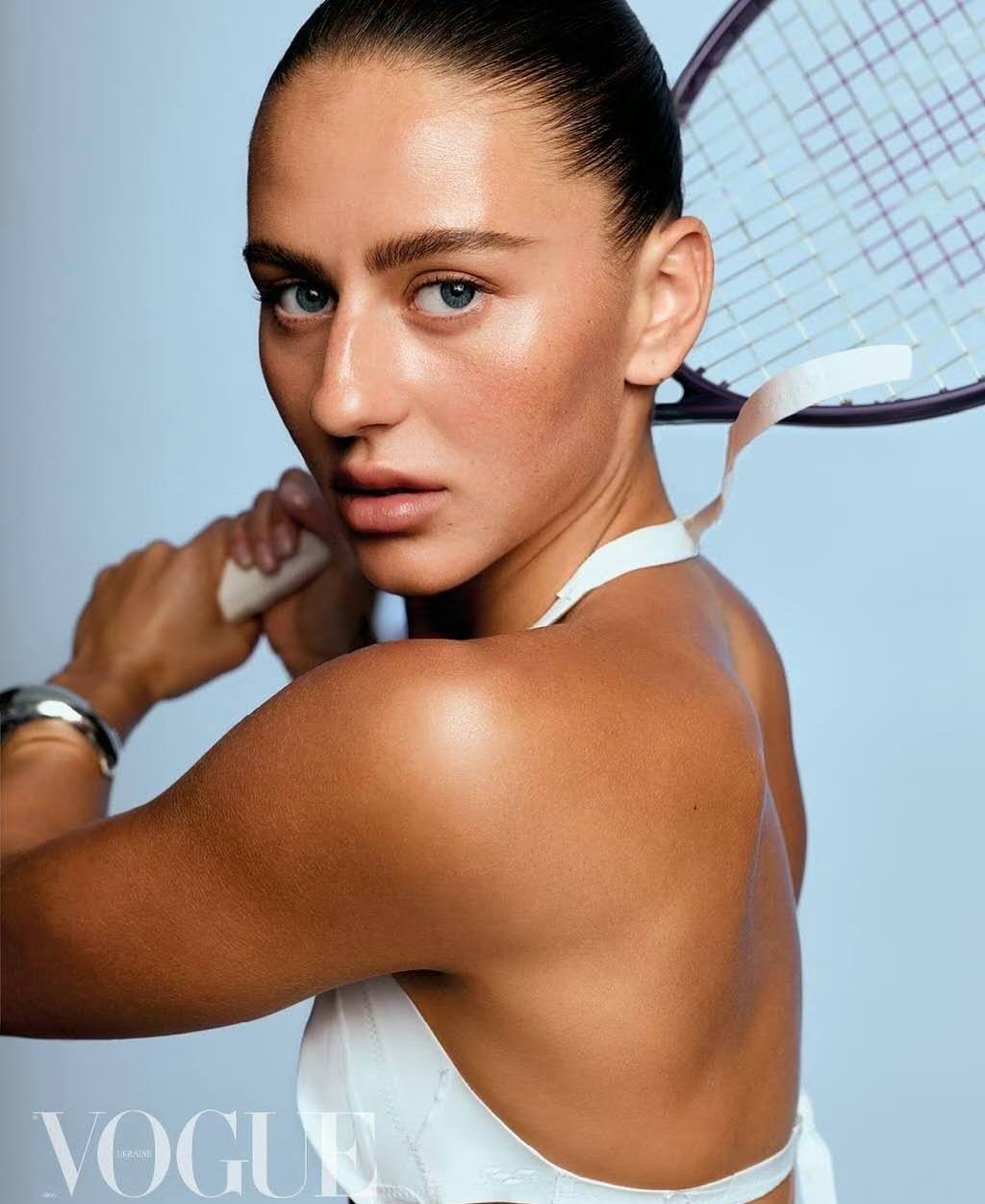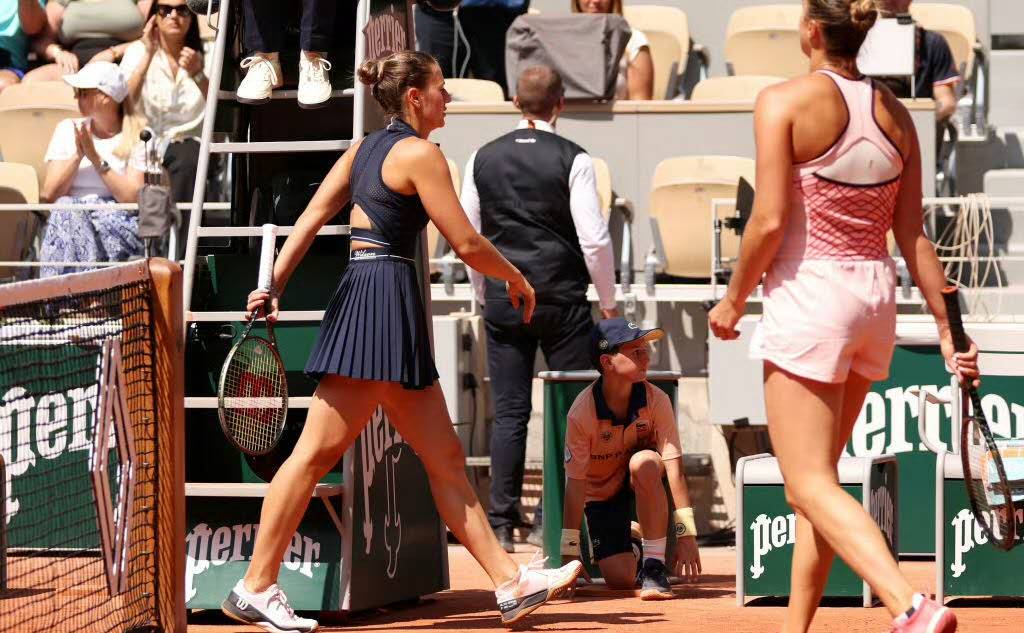Kostyuk’s remarks about Sabalenka's testosterone levels stirring controversy, with some people having very high testosterone, while I am quite petite.
Recently, Ukrainian powerhouse Kostyuk’s comments sparked another uproar in the tennis community. The issue arose during an interview when she discussed the gap between herself and Sabalenka and Swiatek, elevating it to physiological differences and subtly hinting that some players dominate the sport due to elevated testosterone levels caused by medication.
“We all have our own physiological makeup; some have higher testosterone levels, others lower. Is it natural? It must help, but I just feel smaller than them.” Kostyuk’s statement ignited a massive reaction in the tennis world!

The “them” she referred to are the top female players today—world number one Sabalenka and Polish star Swiatek. Many media outlets quickly responded, calling Kostyuk’s words “the boldest statement in women’s tennis since Hingis sparked huge controversy twenty years ago by saying ‘Moralesmo looks like a man!’”
But her remarks didn’t end there; Kostyuk also candidly analyzed her experiences playing against top players during the conversation.
“When I played Swiatek, I was completely unprepared. The last time I faced her was over a year ago; she is incredibly strong,” Kostyuk said. “Against Sabalenka, I knew it would be a tough battle. I have my own technical strengths, but ultimately, they are much more robust, taller, and stronger than me.”
When asked how she compensates for this physical gap, she replied helplessly, “I can’t just gain 10 kilograms or grow 5 centimeters taller, so I have to make 100% use of everything I already have.”

It is worth noting that when this interview was first released, the part about testosterone levels was omitted. However, as the full record surfaced, Kostyuk’s comments on “physiological structure” quickly ignited public debate.
One of the most questioned points in Kostyuk’s remarks by netizens concerns her description of height. Official data shows Kostyuk is 1.75 meters tall, Swiatek is 1.76 meters—just a 1 cm difference. Sabalenka is indeed taller at 1.82 meters, 7 cm taller than Kostyuk, but this difference is not unusual in women’s tennis.
Moreover, some netizens pointed out examples to counter Kostyuk’s “height argument,” noting that Paolini, who recently defeated Swiatek at the Wuhan Open, officially stands at only 1.63 meters.
Others remarked, “In fact, successful players in the WTA Tour come in various heights. Among the current top ten, Paolini is only 1.63 meters tall but still ranks high and recently defeated Swiatek, making Kostyuk’s comments seem ironic!”

Additionally, some believe Kostyuk was intentionally or unintentionally referencing Swiatek’s doping incident. Last year, Swiatek failed a drug test due to melatonin contamination, and testosterone is one of the indicators for hormonal doping. However, others think Kostyuk’s words were a jab at Sabalenka “looking like a man,” given the ongoing hostility between the two since the Russia-Ukraine conflict and persistent rumors about Sabalenka’s masculine physique. Thus, the Ukrainian player likely aimed to criticize the Russian star through these remarks.
Beyond physiological differences, Kostyuk also highlighted the psychological advantage top players hold, especially evident in her observations of Sabalenka.
“Their confidence level is completely different. I have played some close matches against Sabalenka, and you can see how she behaves at break points. She simply doesn’t care. She never doubts she can save them.”
Kostyuk elaborated on this mental gap: “She serves powerfully and hits forehands without hesitation. She is world number one, has played many finals, and possesses that kind of confidence. That enables her to play without doubt. For me, playing without doubt is not that easy.”

Kostyuk’s match records against these two top players may partly explain her frustration and “exasperation.” According to statistics, Swiatek holds a perfect 3-0 record against Kostyuk, while Sabalenka has won all four encounters, leaving Kostyuk no chance.
These one-sided head-to-head results reflect Kostyuk’s difficulty finding effective ways to break through against these elite players. She admitted in the interview, “I try to figure out how to use my tennis skills to beat them, but I have to work much harder to score points. I have to run a lot more than they do to earn points.”
As Kostyuk’s remarks continue to spread on social media, public opinion has polarized. Some support her honesty, believing she simply revealed the harsh reality of professional sports—that physiological differences do affect performance.
However, more critics feel she implied Sabalenka and Swiatek “look like men,” which is harmful to women’s tennis. A Twitter user wrote, “Kostyuk tries to explain her losses with ‘science’ but ignores many other facts; tennis is more about technique and mindset.”(Source: Tennis Home, Author: Lu Xiaotian)







 Links
Links
 Contact
Contact
 App
App


